How to Grow and Care for Carrots: Expert Techniques for Bountiful Crops
- May 29, 2024
- 0 comment
Learn how to grow and care for carrots with our expert techniques. Master the secrets to achieving bountiful, healthy crops easily. Unlock the secrets to a successful carrot garden with our expert guide on how to grow and care for carrots. Whether you’re a novice gardener or a seasoned grower, this article will provide you with all the techniques you need to cultivate crisp, sweet carrots right in your backyard.

From soil preparation to harvest, we’ll guide you through each step to ensure your carrot crops are not only plentiful but also of the highest quality. Get ready to enjoy the fruits of your labor with carrots that are as nutritious as they are delicious.
Table of Contents
- Understanding Carrots
- Choosing the Right Carrot Variety
- Preparing the Soil
- Sowing Carrot Seeds
- Watering and Nutrient Management
- Managing Pests and Diseases
- Weeding and Mulching
- Harvesting and Storage
- Troubleshooting Common Issues
- Conclusion
- FAQs
Understanding Carrots
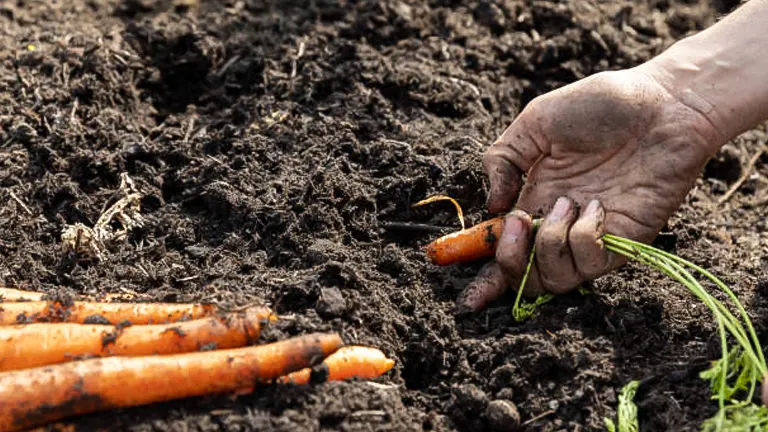
Before planting your first carrot seed, a thorough understanding of the carrot’s botanical and growth requirements is essential for successful cultivation. Carrots (Daucus carota subsp. sativus) are biennial plants, which under natural conditions would spend their first year developing foliage and a robust taproot, and their second year flowering and producing seeds. However, in agricultural or garden settings, carrots are typically grown as annuals, harvested at the end of the first growing season before they can flower.
Climate Adaptation and Growth Conditions
Carrots are versatile root vegetables that thrive under a broad range of climatic conditions but prefer cooler temperatures of 15°C to 18°C (59°F to 64°F). They are frost-tolerant, making them excellent for early spring and late fall cultivation in temperate zones. While they grow best in full sunlight, receiving at least six hours of direct sunlight per day, they can also perform reasonably well in partial shade, where sunlight is available for at least four hours.
Soil Preferences and Root Development
Carrots demand well-drained, sandy loam or loamy soils with a pH between 6.0 and 6.8 for optimal growth. The soil should be free of stones and heavy clumps to allow the smooth elongation of the taproot. Carrots’ roots, which are the primary edible parts, are highly sensitive to soil conditions. Their growth can be significantly stunted or misshapen by compacted, rocky, or nutrient-deficient soils.
Optimal Growing Conditions for Carrots
| Factor | Ideal Condition |
|---|---|
| Temperature | 15°C – 18°C (59°F – 64°F) |
| Sunlight | Minimum 6 hours of direct sunlight |
| Soil Type | Sandy loam or loamy |
| Soil pH | 6.0 – 6.8 |
| Frost Tolerance | High; can withstand light frosts |
| Sowing Depth | 0.6 cm – 1 cm (0.25 in – 0.4 in) |
Understanding these growth characteristics is crucial as they influence everything from the choice of variety to the specifics of care and maintenance throughout the growth cycle. Carrots’ ability to adapt to various environmental conditions makes them a rewarding crop for gardeners, but achieving the perfect harvest requires precise knowledge of and attention to their specific needs.
Choosing the Right Carrot Variety
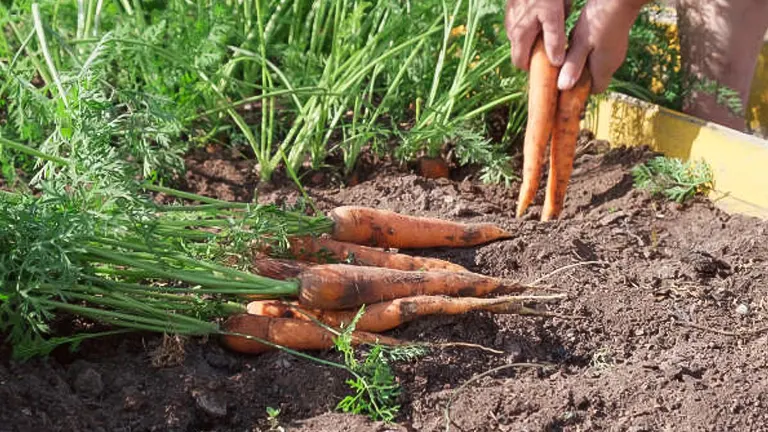
Selecting the right carrot variety is critical for your gardening success and depends on several factors including climate, soil type, and personal preference for carrot shape, size, and sweetness:
- Nantes: Known for their smooth texture and sweet flavor, Nantes carrots are a favorite among home gardeners. They have a nearly perfect cylindrical shape, making them excellent for fresh consumption and salads. They thrive in sandy, well-drained soils and require a consistent moisture level to avoid cracking.
- Imperator: These are the quintessential long, slender carrots often seen in supermarkets. Imperator varieties are valued for their deep color and crisp texture, which makes them ideal for both cooking and raw snacks. They grow best in deep, loose soils that allow for straight root development and are often chosen for their appealing appearance.
- Danvers: This variety is renowned for its adaptability and hardiness, making it suitable for a variety of climatic conditions. Danvers carrots have a thicker, more tapered shape that is excellent for processing or storage. They perform well in heavier soils and are a great choice for gardeners dealing with less-than-ideal soil conditions.
- Chantenay: Chantenay carrots are short and stout with a broad shoulder and a strong, sweet flavor, making them perfect for stews and soups. Their robust nature allows them to thrive in challenging or rocky soils, and their smaller size makes them suitable for gardens with shorter growing seasons.
Characteristics of Carrot Varieties
| Variety | Shape | Soil Preference | Culinary Use | Characteristics |
|---|---|---|---|---|
| Nantes | Cylindrical | Sandy, well-drained | Fresh consumption | Sweet, smooth texture, requires consistent moisture |
| Imperator | Long, slender | Deep, loose | Cooking, raw snacks | Crisp texture, deep color, visually appealing |
| Danvers | Thicker, tapered | Heavier | Processing, storage | Hardy, adaptable to various soils, good for storage |
| Chantenay | Short, stout | Rocky, challenging | Stews, soups | Strong flavor, robust against poor soils, short growth cycle |
For gardeners planning medium or high-density plantings, selecting a variety like Nantes or Imperator is beneficial, as their uniform growth habits and size are conducive to maximizing space efficiency and yield.
Preparing the Soil
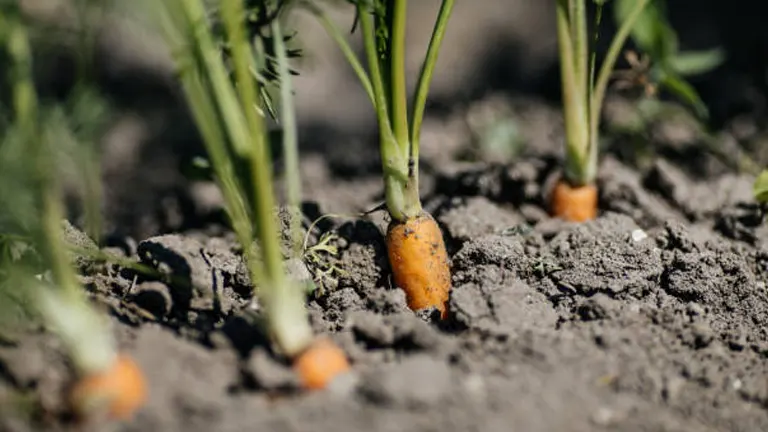
The right soil condition is paramount for growing healthy carrots, as the development of their long taproots depends heavily on soil quality. Here are the steps and considerations to prepare your soil optimally for carrot cultivation:
1. Soil Testing and pH Adjustment
- Soil Testing: Begin by testing the soil’s pH and nutrient levels. Carrots thrive in slightly acidic to neutral soils, with an optimal pH range of 6.0 to 6.8. Soil testing kits are available at garden centers or through local agricultural extensions.
- pH Adjustment: If the soil pH is outside the desired range, it can be adjusted. Add lime to raise the pH or sulfur to lower it, following the recommendations based on the soil test results.
2. Soil Structure and Composition
- Texture: Carrots require well-drained, deep, and loose soil. Sandy loam soils are ideal due to their light texture and excellent drainage properties.
- Amendments: For heavy or clayey soils, incorporate organic matter such as compost, aged manure, or peat moss to improve soil structure, increase drainage, and enhance aeration. These amendments help create a friable soil conducive to root penetration.
- Depth: Deep tilling to a depth of at least 12 inches (30 cm) is crucial to remove obstacles like stones, hard clumps, or compacted layers that can hinder root growth and cause forked or stunted carrots.
3. Fertility and Nutrient Management
- Balanced Fertilizer: Before planting, incorporate a balanced, slow-release fertilizer into the soil. An ideal formulation would be a 10-10-10 NPK (Nitrogen, Phosphorus, Potassium) mix, providing essential nutrients for sustained growth.
- Nutrient Needs: Carrots particularly benefit from phosphorus for root development and potassium for overall plant health. Avoid high nitrogen levels, which can promote excessive foliage at the expense of root growth.
- Organic Options: For organic gardens, bone meal can provide phosphorus, while greensand or kelp meal can supply potassium. Compost tea can be used for a balanced nutrient boost.
4. Moisture Management
- Irrigation: Ensure the soil is consistently moist but not waterlogged. Drip irrigation or soaker hoses are effective in maintaining steady moisture levels without causing soil compaction or erosion.
- Mulching: Applying a mulch layer helps retain soil moisture, regulates temperature, and suppresses weeds. Organic mulches like straw or shredded leaves are excellent choices.
Optimal Soil Preparation for Carrots
| Factor | Ideal Condition | Notes |
|---|---|---|
| Soil pH | 6.0 – 6.8 | Adjust with lime (raise) or sulfur (lower) |
| Soil Type | Sandy loam, well-drained, loose | Improves root penetration and growth |
| Tilling Depth | Minimum 12 inches (30 cm) | Removes obstacles, aids deep rooting |
| Organic Amendments | Compost, aged manure, peat moss | Enhances structure and fertility |
| Fertilizer | Balanced 10-10-10 NPK or organic options | Provides essential nutrients |
| Moisture Management | Consistent moisture, drip irrigation | Prevents compaction and promotes growth |
| Mulching | Straw, shredded leaves | Retains moisture, controls temperature |
Proper soil preparation is fundamental for cultivating healthy, high-yield carrot crops. By focusing on soil structure, fertility, pH balance, and moisture management, you can create an optimal growing environment that supports vigorous root development and maximizes your carrot harvest.
Sowing Carrot Seeds
Timing and Technique
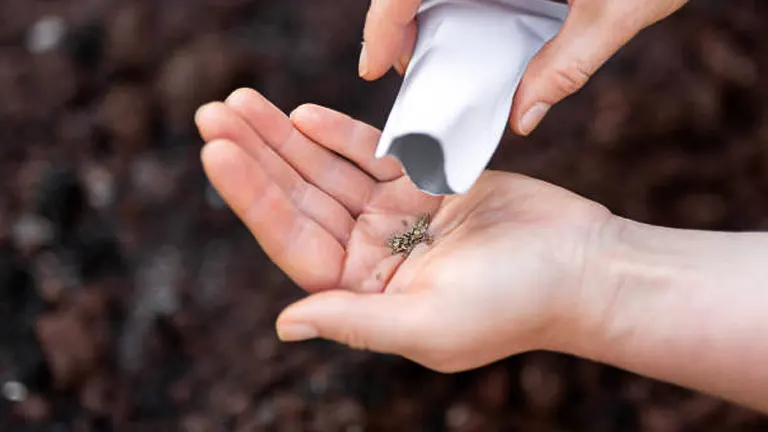
The timing of sowing carrot seeds is crucial to ensure a successful crop. Carrots have a specific temperature range for optimal germination, generally between 7°C and 29°C (45°F to 85°F), with an ideal germination temperature of around 20°C (68°F). Sowing should occur early in the spring as soon as the soil is workable, and for a fall harvest, seeds should be planted in mid to late summer to avoid the hottest days of the year which can inhibit germination.
When sowing, create shallow trenches approximately 0.6 cm (1/4 inch) deep in well-prepared soil. Distribute the seeds sparingly along the trench to reduce the need for extensive thinning later. This not only saves time but also prevents root disturbance, which can affect the growth of neighboring plants. After sowing, cover the seeds lightly with a fine layer of soil or compost and water gently. Ensure the soil remains consistently moist but not waterlogged to facilitate smooth germination.
Spacing for Optimal Growth
Proper spacing is critical for carrot development. Initially, sow seeds about 5-7.5 cm (2-3 inches) apart in rows that are 30-40 cm (12-16 inches) apart. This spacing supports the growth of healthy carrot roots by providing adequate room for expansion and reducing competition for nutrients and water.
Once the seedlings reach about 5 cm (2 inches) in height, thin them to ensure each carrot has sufficient space to mature. This thinning is essential in medium and high-density planting systems to maximize yield while maintaining good airflow and sunlight exposure for each plant. Thinning also helps prevent the development of misshapen carrots resulting from overcrowded growing conditions.
Key Parameters for Sowing Carrot Seeds
| Parameter | Detail | Rationale |
|---|---|---|
| Germination Temp | 7°C – 29°C (45°F – 85°F) | Optimal range for carrot seed germination |
| Ideal Germination | 20°C (68°F) | Most efficient temperature for seed sprouting |
| Sowing Depth | 0.6 cm (1/4 inch) | Minimizes energy expenditure for sprouting |
| Seed Spacing | 5-7.5 cm (2-3 inches) | Reduces need for thinning, allows growth room |
| Row Spacing | 30-40 cm (12-16 inches) | Ensures adequate air and light penetration |
| Watering | Keep moist, not waterlogged | Supports germination without rotting seeds |
| Timing | Early spring, mid to late summer | Avoids temperature extremes for planting |
Watering and Nutrient Management
Watering Practices
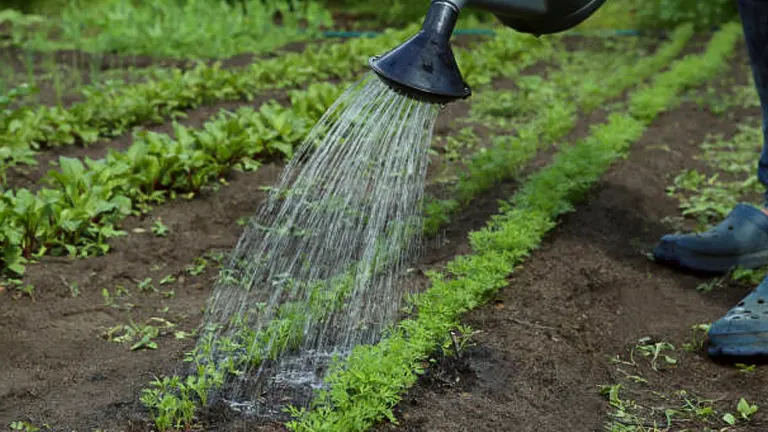
Effective watering is crucial for growing carrots that are well-formed and sweet. Carrots require consistent soil moisture to a depth of 10-12 cm (4-5 inches), which is essential for uninterrupted root development. Use soaker hoses or drip irrigation systems to deliver water directly to the soil, minimizing evaporation and reducing the risk of leaf diseases that can occur with overhead watering. During peak growth periods, the frequency of watering may increase to as often as every other day under dry weather conditions.
Key Watering Parameters:
- Depth of Moisture: Maintain moisture to a depth of 10-12 cm (4-5 inches).
- Method: Use soaker hoses or drip irrigation to avoid wetting foliage.
- Frequency: Adjust watering frequency based on weather conditions, more frequent in dry periods.
Nutrient Needs
Carrots have moderate nutritional requirements but respond well to precise nutrient management. Initially, incorporate a balanced granular fertilizer with a ratio of 10-10-10 (N-P-K) into the soil before planting. This provides a solid foundation for growth. As the plants develop, particularly two to three weeks after seedlings emerge, consider applying a fertilizer with a lower nitrogen content (such as 5-10-10) to encourage robust root growth rather than lush foliage.
Excessive nitrogen can cause carrots to become hairy and misshapen, while inadequate phosphorus can lead to poor root development. Potassium enhances overall plant health, helping to regulate metabolic functions and improving drought resistance.
Nutrient Management for Carrots
| Nutrient | Ideal Formulation | Timing | Impact on Growth |
|---|---|---|---|
| Nitrogen (N) | Low to moderate | Initial and post-emergence | High levels can cause excessive top growth |
| Phosphorus (P) | Moderate to high | Pre-planting | Crucial for healthy root development |
| Potassium (K) | Moderate to high | Pre-planting | Supports plant health and stress resistance |
| Application | Granular and liquid | Pre-planting and post-emergence | Ensures balanced growth and root formation |
Managing Pests and Diseases
Common Pests
Carrots are vulnerable to various pests that can significantly affect their health and yield. Here are some common pests and effective strategies for managing them:
- Carrot Fly (Psila rosae): Carrot flies are a major threat to carrot crops. They lay eggs near the carrot tops, and the emerging larvae burrow into the roots, causing significant damage. One effective strategy is the use of floating row covers to physically block the flies from accessing the carrots. Additionally, interplanting with aromatic plants like onions, leeks, and garlic can help mask the scent of carrots and deter flies.
- Root-knot Nematodes (Meloidogyne spp.): These microscopic worms attack carrot roots, causing galls that disrupt the plant’s ability to absorb water and nutrients. Implement crop rotation with non-host crops such as corn or wheat to break the life cycle of nematodes.
Disease Prevention
Carrots can also suffer from various fungal diseases, which are particularly prevalent in wet and humid conditions. Effective disease management strategies include:
- Leaf Blight (Alternaria dauci): This fungal disease causes dark, water-soaked spots on carrot leaves, which can lead to significant foliage loss. Ensure good air circulation by spacing plants adequately and using drip irrigation to avoid wetting the foliage. Fungicides containing copper compounds can be used as a preventive measure, especially after heavy rains.
- Root Rot (Pythium spp., Rhizoctonia solani): Poorly drained soils and excessive moisture can lead to root rot diseases. Improve soil drainage and avoid overwatering to minimize the risk. Crop rotation with non-susceptible crops is also crucial to reduce soil pathogen levels.
Weeding and Mulching
Effective Weeding
Weeds are not merely nuisances; they are competitors that challenge carrots for essential resources such as nutrients, water, and light. Efficient weed management is crucial to ensure your carrots can thrive without competition.
- Methodology: Weeding should be done regularly and with great care to avoid disturbing the delicate roots of carrot plants. The best time to weed is after a rain or watering session when the soil is moist. This condition allows weeds to be pulled out more completely, including the roots, which prevents regrowth.
- Tools: Use a hoe carefully for shallow cultivation or hand-pull weeds to minimize disturbance. For tighter spaces between plants, smaller hand tools like a garden fork can help remove weeds without impacting carrot roots.
Benefits of Mulching
Mulching serves multiple functions in carrot cultivation, from moisture conservation to temperature regulation and weed suppression.
- Material Choices: Organic mulches such as straw, grass clippings, or shredded leaves are ideal for carrots. These materials not only suppress weeds but also add organic matter to the soil as they decompose, improving soil structure and fertility over time.
- Application: Apply a 5-7.5 cm (2-3 inch) layer of mulch around carrot plants after the seedlings are well-established. This thickness is enough to suppress weeds effectively while allowing moisture to penetrate the soil and keeping the soil temperature stable.
Harvesting and Storage
When to Harvest
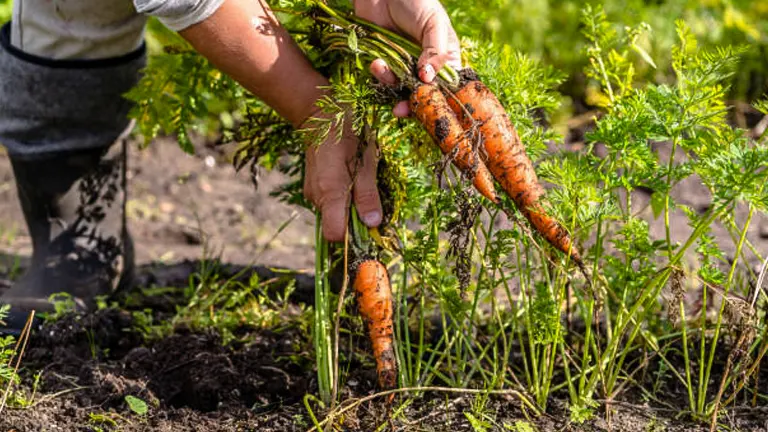
Determining the right time to harvest carrots is crucial for enjoying them at their best. Generally, carrots are ready to harvest when their tops are about 3/4 inch in diameter, but this can vary depending on the variety. For most types, expect to begin harvesting 60 to 80 days after planting. Gently loosen the soil around the carrots with a fork and pull them out by gripping the base of the stems to avoid breaking the tops.
Storing Carrots
After harvesting, remove the tops to prevent them from drawing moisture from the roots. Wash the carrots gently to remove soil and let them dry completely. For long-term storage, keep the carrots in a cool, humid place like a refrigerator or a root cellar. Wrapping them in moist paper towels or keeping them in peat moss can help maintain their freshness for several months.
Troubleshooting Common Issues
Addressing Growth Problems
Even with careful management, carrots can sometimes encounter issues like splitting, which is often caused by uneven watering. Ensure consistent moisture levels throughout the growing season to prevent this. If carrots are undersized, it might be due to overcrowded planting; make sure to thin seedlings early enough to give each carrot sufficient space to develop.
Dealing with Discoloration and Disease
Discoloration in carrot roots can be a sign of nutrient deficiencies or disease. A lack of potassium often leads to pale carrots, while excess nitrogen can result in forked or hairy roots. Adjust your fertilization strategy accordingly. For diseases like root rot, improving drainage and avoiding overwatering are key preventative measures. Rotate your carrot crops each year to different locations to minimize the risk of soil-borne diseases recurring.
Related Post
- How to Build a Barn: A Step-by-Step Guide for Beginners
- How to Build a Sustainable Compost Bin: Easy and Eco-Friendly DIY
- How to Fertilize Bougainvillea: A Complete Guide for Stunning Blooms
- How to Fertilize Apple Trees: Essential Tips for a Bountiful Harvest
- How to Fertilize Lemon Trees: Secrets for Thriving Citrus
- How to Fertilize Avocado Tree: A Step-by-Step Guide for Lush Growth
- 10 Best Bow Saws to Buy in 2024: Top Picks for the Money
- Best Miter Saw For Beginners
- Top 10 Pruning Saws to Buy in 2024: Best for the Money
- 7 Best Pocket Chainsaw
Conclusion
Congratulations on mastering the essentials of carrot cultivation through this comprehensive guide, from selecting the right variety to the nuances of harvesting and storage. Gardening is not only about nurturing plants but also about enriching your connection with nature. As you apply these detailed techniques in your garden, remember that each season offers new opportunities to learn and grow. Experiment with different carrot types and techniques, share your successes, and may your efforts lead to a garden that is as vibrant and fruitful as the carrots you harvest.
FAQs
- What is the best time of year to plant carrots?
Carrots can be planted in early spring as soon as the soil can be worked. For a fall harvest, plant them in mid to late summer, about 10-12 weeks before your first expected frost. - How deep should I plant carrot seeds?
Carrot seeds should be sown about 1/4 inch deep. Lightly cover them with soil, ensuring that the seeds have good contact with the earth but aren’t buried too deeply. - Can I grow carrots in containers?
Yes, carrots can thrive in containers. Make sure to choose a deep enough container (at least 12 inches deep) to accommodate the root growth and use loose, well-draining soil. - How do I prevent my carrots from being too thin or forked?
Thin carrots often result from overcrowding. Thin seedlings early to give each carrot space to develop. Forked carrots can occur due to rocky or hard soil, so ensure your soil is well-tilled and free of debris before planting. - What are some effective ways to protect carrots from pests like carrot flies?
Use floating row covers to protect your carrots from carrot flies. Planting aromatic herbs like rosemary or garlic nearby can also help deter these pests by masking the scent of the carrots. - How often should I water my carrot plants?
Carrots need consistent moisture to grow well. Water them deeply once or twice a week, ensuring the soil is moist but not waterlogged. Adjust frequency based on rainfall and temperature conditions. - What type of fertilizer is best for growing carrots?
Use a balanced, low-nitrogen fertilizer to encourage strong root development without too much leafy growth. Apply fertilizer sparingly a few weeks after germination and possibly again midseason if growth seems slow. - How can I tell when my carrots are ready to harvest?
Carrots are typically ready to harvest when the tops of the carrots are about 3/4 inch in diameter at the soil surface, but this can vary by variety. Check one carrot first to test maturity before harvesting the entire crop.
With these expert techniques, you’re well on your way to enjoying a plentiful harvest of delicious, home-grown carrots. May your garden be fruitful and your carrots crunchy!

Benjamin Brooks
Forestry AuthorGreetings! I'm Benjamin Brooks, and my journey over the past 15 years has revolved around the fascinating realms of content creation, expertise in snow clearing, and the intricate world of lumberjacking and landscaping. What began as a simple curiosity about the natural world and heavy machinery has evolved into a passionate profession where my love for crafting words intertwines seamlessly with my lumberjacking and garden skills.













Leave your comment